Bristol F.2B Fighter Royal Flying Corps
Production Time 9 to 10 weeks
Shipment is by FedEx, UPS or DHL International Express Courier with a normal door-to-door delivery time worldwide of within 2-3 business days after dispatch. Due to the current volatility of world fuel prices, the amount mentioned here is our best estimate for DHL and UPS and may be subject to change at the time of shipping.

Model Description: Bristol F.2B Fighter Royal Flying Corps Wood Replica Scale Custom Model Aircraft
Manufacturer: Bristol
Wingspan: 15 Inches (38.1 Centimeters)
Height: 4.1 Inches (10.4 Centimeters)
Scale: 1:29
Registration: D8096
$279.50
Production Time 9 to 10 weeks
-
United States dollar ($)
-
Pound sterling (£)
-
Euro (€)
-
Australian dollar ($)
-
Canadian dollar ($)
-
Singapore dollar ($)
-
Swiss franc (CHF)
-
Japanese yen (¥)
-
Danish krone (kr.)
-
Hong Kong dollar ($)
-
Norwegian krone (kr)
-
Swedish krona (kr)
-
United Arab Emirates dirham (د.إ)
General Product Description
Our PlaneArts Bristol F.2B Fighter Royal Flying Corps model exhibits unique, unrivaled quality and detailed design to come as close as possible to the accuracy of the actual plane. It comes as standard with a robust, durable base or stand which is available in a variety of different finishes designed to match your own personal requirements including solid wood, wood with polished metal supports or adjustable wood wall mount and will be ready within about 9-10 weeks from placement of order.
The Bristol F.2B Fighter Royal Flying Corps model is made of the finest kiln dried renewable mahogany wood (commonly known as Lauan or Meranti) which has undergone many stages of carving and meticulous and careful sanding giving the beautiful, finished museum quality masterpiece. Many collectors and model connoisseurs demonstrate their preference for genuine handmade and hand painted mahogany wood models rather than plastic or die cast (diecast) alternatives due to the overall look and totally different feel of the item - we trust you will find the same. We can however, if required produce the same model in Solid Cast Resin so just click and contact us for further information. Our craftsmen and gifted artisans ensure that our finely handcrafted model airplanes match the precise blueprint details of the original aircraft. The paint scheme, markings and parts are closely matched, reflecting the original aircraft. This stylish top-quality desktop replica model will surely enthrall anyone who receives this as a gift and for sure one of the most appropriate and desirably collectable gifts for any military aviation enthusiast and avid aircraft collector whilst also displaying a perfect resemblance to the actual real life version.
There are many types of military propeller aircraft, but the basic types are bombers, fighters, fighter bombers, spotter planes, transporters, patrol aircraft, trainers, and reconnaissance and observation aircraft. All these types of aircraft are used for different types of missions. If you're a fan of historic or present-day military aviation, our model aircraft will bring the excitement and character of these aircraft right into your own home. You can order a wood airplane model of a North American B-25 Mitchell Bomber, a B17 - Flying Fortress, or a P-51 Mustang Nervous Energy V not forgetting the Bf 109, Spitfire, FW 190, A6M Zero, P-38 and F4U. These classic, propeller airplane models are of the highest quality. Each is individually crafted by our expert craftsmen. They produce handmade scale mahogany airplane models of the finest aircraft from World War I and II to present day biplanes and triplanes.
If you require, we can also make the Bristol F.2B Fighter Royal Flying Corps model in any other military, government or even private livery or colour scheme you require and if necessary, in a different size or scale. Just click here to contact us with a description or photographs of what you require, and we will let you have a quotation for the necessary customization by return email. We can also make bespoke scale replicas of any other private / civil commercial airliner or airliners, helicopter, glider, gliders with engines, military jet, warplane jets, biplane, triplane, tail fin, spacecraft, rocket or NASA model you require in any airline, military or civilian livery or colors. We also produce model airships, blimps, dirigibles, blimps, boats, and ship collectibles. Wall plaque or seal for military, government or private customers. Again, by clicking here to contact us just let us know exactly what you need.
The Bristol F.2B Fighter: A Cornerstone of the Royal Flying Corps
In the annals of military aviation history, few aircraft are as revered and celebrated as the Bristol F.2B Fighter. A product of British innovation during World War I, this biplane not only showcased superior design and technology for its time but also played a crucial role in the operations of the Royal Flying Corps (RFC), the air arm of the British Army before and during the First World War. The Bristol F.2B, affectionately known as the “Brisfit” or “Biff” among its crews, combined speed, durability, and firepower in a way that few contemporaries could match, making it one of the most effective fighters of the Great War.
Innovative Design and Construction:
The Bristol F.2B was an evolution of its predecessor, the Bristol F.2A, featuring significant improvements that enhanced its performance and survivability on the battlefield. One of its most notable features was its construction. The aircraft’s airframe was made predominantly from wood, with fabric covering, a common practice of the era that provided a good balance between strength and lightness. Its design was revolutionary at the time, employing a two-seat configuration that allowed for both a pilot and an observer/gunner, a setup that became standard for future military aircraft.
Engine Power and Performance:
Under the hood, the Bristol F.2B was initially powered by a Rolls-Royce Falcon inline engine, which provided up to 275 horsepower in later versions. This engine was key to the F.2B’s impressive performance, allowing it to reach a top speed of around 123 mph (198 km/h) and a service ceiling of approximately 18,000 feet (5,486 meters). Such capabilities enabled it to engage in dogfights with the agility of a single-seat fighter while offering the additional firepower of the observer’s machine gun.
Armament and Tactical Versatility:
The armament of the Bristol F.2B was a critical factor in its success. Equipped with one forward-firing .303 in Vickers machine gun for the pilot and one or two .303 in Lewis guns for the observer, it could unleash a formidable barrage against enemy aircraft and ground targets. This firepower, combined with the aircraft’s robust design, allowed it to undertake a variety of roles on the battlefield, from reconnaissance and artillery spotting to ground attack and air superiority missions.
Legacy and Impact:
The Bristol F.2B made its operational debut with the RFC in 1917 and quickly proved its mettle. Its impact was profound, contributing significantly to air superiority for the Allies and influencing air combat tactics for years to come. The aircraft’s success lay not only in its technical specifications but also in the bravery and skill of its crews, who maximized its capabilities in the heat of battle.
Over 5,000 units were produced during its service life, and the Bristol F.2B continued to serve in various roles well into the 1930s with the RAF (Royal Air Force), which was formed in 1918 from the RFC and the Royal Naval Air Service. Its legacy is preserved in several aviation museums around the world, where the Bristol F.2B stands as a testament to early 20th-century aviation ingenuity and the pivotal role of air power in modern warfare.
In conclusion, the Bristol F.2B Fighter remains one of the most iconic aircraft of World War I. Its contributions to the Royal Flying Corps and its enduring legacy as a versatile and effective military aircraft highlight its significance in the development of air combat and military aviation technology.
| Weight | 6 kg |
|---|---|
| Dimensions | 12 × 15 × 4.1 in |

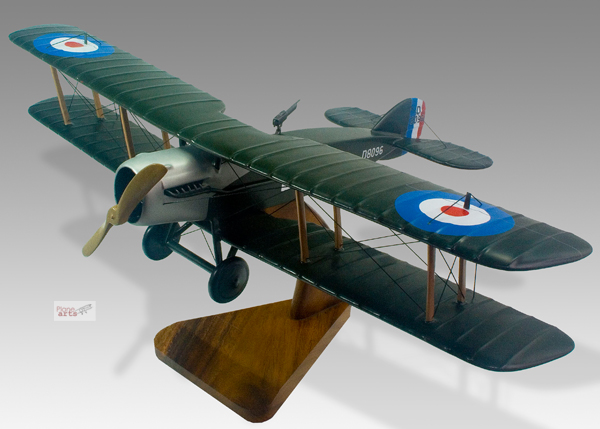
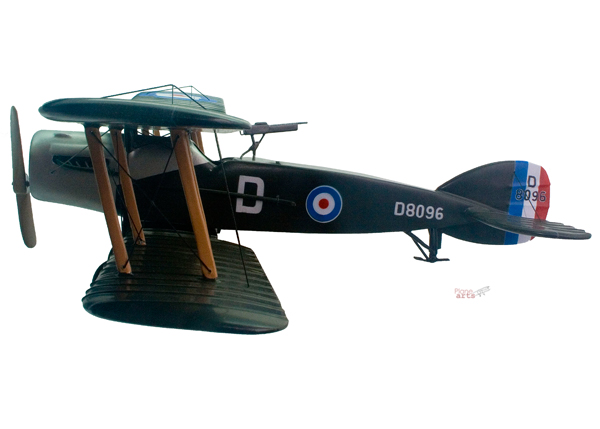
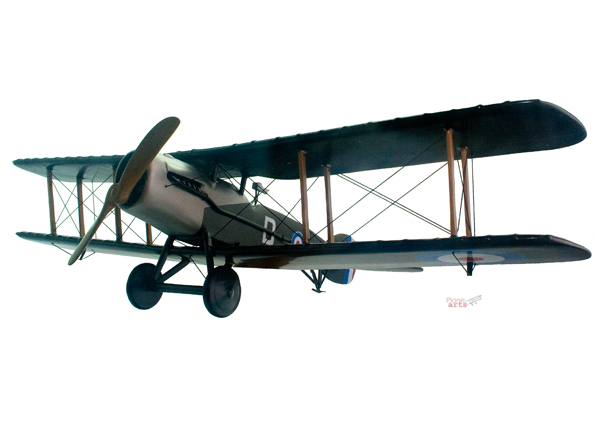
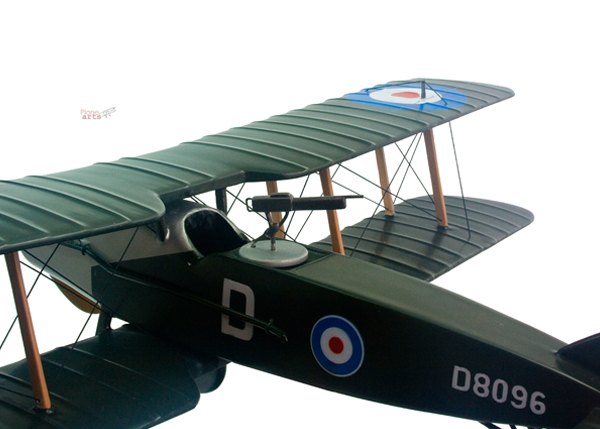
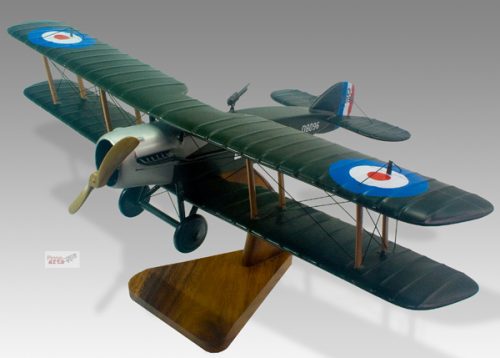

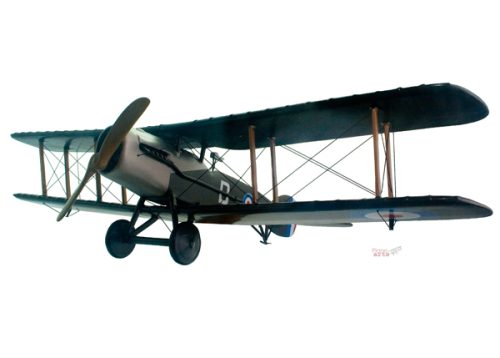
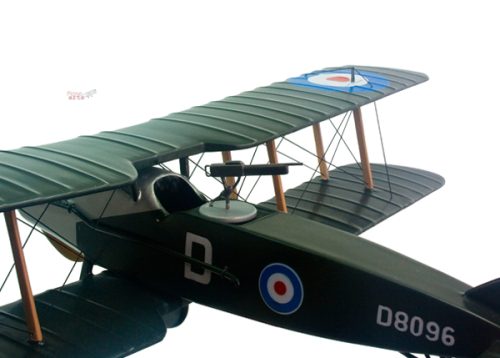
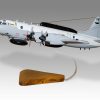
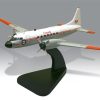
Reviews
There are no reviews yet.